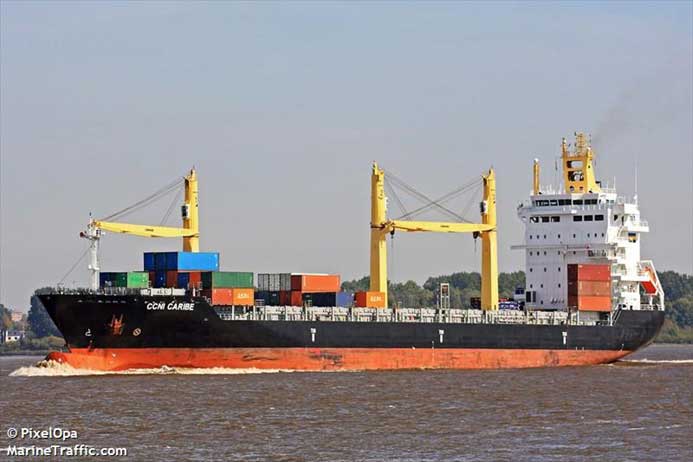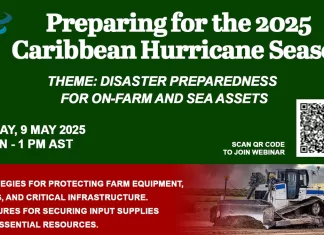Maritime transport is widely considered to be the backbone of world trade.
UNCTAD’s Review of Maritime Transports 2015 report estimates that 80 per cent of global trade by volume and over 70 per cent of global trade by value are transported by sea and handled by ports worldwide. For most developing countries these shares are even higher. A fundamental requirement for the safe transportation of goods is adequate nautical charting. However, despite heavy reliance upon maritime transport to facilitate international trade, many developing regions do not have adequate cartographic or mapping coverage. (Johnston, 2011)
The Greater Caribbean region has extensive commercial interests in not only merchant shipping but also fisheries, aquaculture, minerals, energy and tourism. Given such interests, there is a growing demand for reliable hydrographic surveys and coverage which provide reliable and up-to-date hydrographic information.
What is Hydrography and why is it important to the Greater Caribbean Countries?
According to the International Hydrography Organisation (IHO), hydrography is defined as:“….the branch of applied sciences which deals with the measurement and description of the physical features of oceans, seas, coastal areas, lakes and rivers, as well as with the prediction of their change over time, for the primary purpose of safety of navigation and in support of all other marine activities, including economic development, security and defence, scientific research, and environmental protection.”
Hydrography involves measuring the depth of the water and locating the position of all the navigational hazards that lie on the seafloor, such as wrecks and rocks. This is primarily achieved through the use of specialised ships and boats operating echo sounders and sonars, as well as survey aircraft fitted with lasers. Hydrography also involves measuring the tide and the currents.
The most well-known application of hydrographic information is for creating nautical charts to be used for navigation. Hydrographic information is required for the safe, efficient and sustainable conduct of every human activity that takes place in, on or under the sea. The IHO outlines such human activities to include:
- resource exploitation – fishing, minerals
- environmental protection and management
- maritime boundary delimitation
- national marine spatial data infrastructures
- recreational boating
- maritime defence and security
- tsunami flood and inundation modelling
- coastal zone management
- tourism
- marine science
Hydrographic surveying data forms the basis for Special Marine Infrastructure Data which is used for Bathymetry, Marine Geology, Water Column and Oceanography. Bathymetry is an integral component of hydrography which involves the study of the “beds” or “floors” of water bodies, including the ocean, rivers, streams, and lakes.
Hydrographic services can be seen as a both a fundamental enabler and an important boost to several aspects of economic development. Its direct and indirect benefits are not traditionally recognized for their economic contribution given the difficult to quantify their impact. The economic benefits of hydrography to the Greater Caribbean Region can be seen in important sectors such fishing and aquaculture. Here, the information that hydrography can provide to ensure efficient use of these resources is vital. The fishing sector employs over 142, 000 persons directly and indirectly across the Region. It also earns an estimated US $150 million in regional exports per year. Fish is also an important protein source for domestic consumption in many countries. Commercial fishermen benefit from accurate charting through safe navigation, knowledge of preferred fish habitats, locating wrecks and other hazards that can interfere with nets, and improving the speed and efficiency of on-load/offload operations. Bathymetry is a critical component of the characterization and delineation of fish habitats, as well as, the proper location and extent of aquaculture areas. (Connon & Nairn, 2010)
Mineral resources include sand, gravel, oil, and other economically important resources found on, or below, the ocean floor. Connon & Naim (2010) assert that hydrography, by definition, characterizes the nature of the seafloor and therefore is a direct contributor to the discovery of areas of mineral resources available for exploitation. As mentioned above, commercial shipping is the primary method of trade for ACS countries. The region has over 50 ports (varying levels of global functionality) with 132 container shipping services annually. Hydrography is therefore critical to ensuring better efficiency in business and trade facilitation.
Despite the proven value of hydrographic services, many Caribbean countries do not have adequate hydrographic capacity or access to the necessary training, given the large financial burden associated with such services. However, for those with such capacity, the provision of hydrographic support can be a great area for cooperation. The ACS supports such regional cooperation in the interest of trade. As part of the Trade Directorate’s 2nd phase of Interconnectivity for Improved Trade Facilitation and Short-Distance Maritime Transport in the Greater Caribbean(SDMT) Project, Mexico, through the Mexican Directorate of Hydrography of the Marine Secretariat (SEMAR by its acronym in Spanish) has generously offered to lead the Strengthening of Hydrographic Capacities in Mesoamerica and the Caribbean (FOCAHIMECA) Project. This project entails capacity building (postgraduate studies, seminars and workshops), and exchange of hydrographic information (bathymetry and data processing, as well as creating, printing and distributing nautical charts of the countries of the region).
The most recent capacity building workshop was held in Campeche, Ciudad de Carmen, Mexico at the 3rd Mexican Hydrographic Convention hosted by SEMAR held 27th-29th April, 2016. The convention focused on the use and operation of equipment and hydrographic software with presentations from SEMAR as well as Mexican and international organisations and companies with expertise in hydrography.
Representatives from the following 17 countries participated: Antigua and Barbuda, Costa Rica, Dominica, Dominican Republic, El Salvador, Grenada, Guatemala, Guyana, Haiti, Honduras, Jamaica, Nicaragua, Panama, Saint Lucia, Saint Maarten, Saint Kitts & Nevis and Saint Vincent & the Grenadines.
The Association of Caribbean States remains committed to improving trade facilitation and encouraging trade relations amongst the Member States through hydrographic capacity building. For 2016, there are three more FOCAHIMECA workshops which are open to the relevant maritime and hydrographic authorities in the ACS Member States. The ACS thus looks forward to the continued support and participation of the Caribbean in these activities and to the overall improvement of the Region’s hydrographic capacity.
Alberto Duran Espaillat is the Director of Trade Development and External Economic Relations and Cherise Trotman is the Trade Research Assistant of the Association of Caribbean States. Any comments or feedback should be submitted to feedback@acs-aec.org
(Press release courtesy of the Ministry of Foreign Affairs on behalf of the Association of Caribbean States (ACS)





